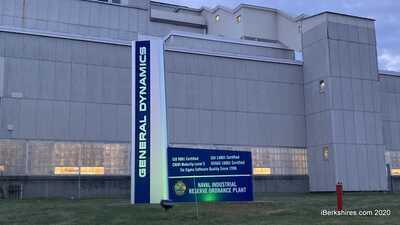GD Names VP for Strategy and Business Development
PITTSFIELD, Mass. — General Dynamics Mission Systems announced that Chris Montferret is the new vice president for Strategy and Business Development in the Maritime and Strategic Systems (M&SS) line of business.
The M&SS line of business serves the U.S. Navy, the U.S. Air Force, restricted customers, and a variety of commercial customers with mission critical multi-domain solutions and electronic systems integration for manned and unmanned undersea, and surface vehicles. The business protects warfighters, strategically deters adversaries, and contributes to the success of our customers' missions.
"Chris brings a wealth of knowledge and experience to this role. He is a proven executive with a 35-year career at General Dynamics and is committed to supporting the communities we serve," said Laura Hooks, vice president and general manager of the M&SS line of business.
Previously, Montferret served as the Strategy and Business Development Director for the Strategic Systems business area within General Dynamics Mission Systems Maritime and Strategic Systems line of business. In this position he was responsible for customer relationship management, strategic planning, market assessment and analysis, new business investment management, and overall growth across the Strategic Systems portfolio.
Montferret joined General Dynamics (formerly General Electric) in 1987 as a member of the Edison Engineering Leadership Program. Since then, he has held positions of increasing responsibility in engineering, quality assurance, program management, and business development over his thirty-five year career. As a business development capture manager, he led the General Dynamics Mission Systems teams that successfully captured the Littoral Combat Ship (LCS), Expeditionary Fast Transport (EPF), and Air and Missile Defense Radar (AMDR) programs for General Dynamics Mission Systems. As the segment director for the strategic command and control business area segment, Montferret oversaw and managed the profit and loss for multi- discipline design, production, and sustainment teams for the system that controls the targeting and launch of ballistic missiles from United States and United Kingdom SSBN submarines, and Tomahawk missiles from the United States SSGN platform.
Prior to his current role, he also served as the business development director for surface systems business area, undersea systems business area, and the Air Force strategic systems campaign.
Montferret holds a Bachelor of Science degree in Electrical Engineering from Clarkson University and earned a Master of Engineering degree in Computer and Systems Engineering from Rensselaer Polytechnic Institute in 1990. He has also completed several executive development programs within General Electric and General Dynamics.
He and his wife Monica live in Berkshire County, Massachusetts, where he is active in the local community, serving on the Board of Directors of the Berkshire United Way and the Dalton Community Recreation Association.
Tags: General Dynamics,

